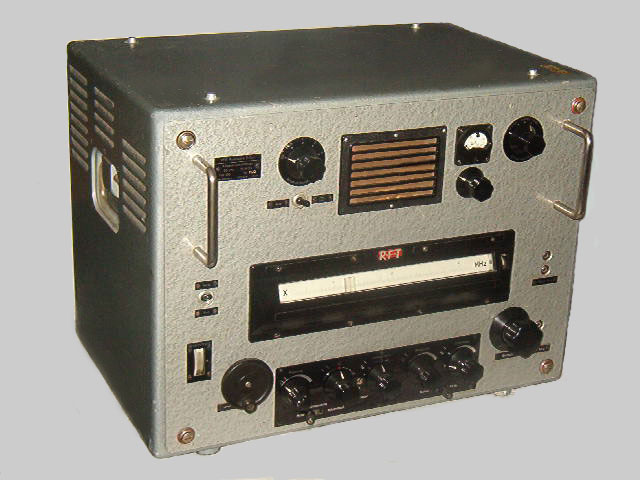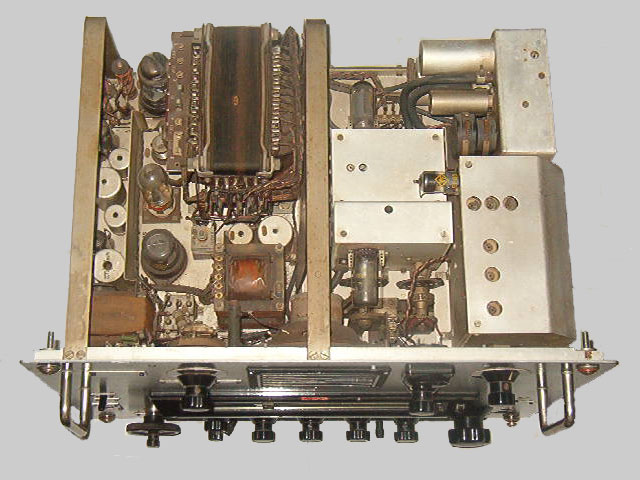| Specifications |
| Coverage: |
30
kHz - 30 MHz in ten ranges |
| Modes: |
AM/CW/MCW |
| Antenna
Input: |
60
Ohms unbalanced, 240 Ohms balanced |
| Sensitivity: |
CW:
0.15 µV 6 dB S/N, AM: 3 µV 10 dB S/N |
| Setting
& Read out: |
<5
kHz at 30 MHz, better if marks on micro scale are registered in a logbook |
| Selectivity: |
Variable
0.2 - 6 kHz -6 dB, formfactor -6/-60 dB: 1:2.8 at 6 kHz bandwidth |
| IF: |
1st
IF: 1875 kHz in the HF ranges, 468 kHz in the LF ranges, 2nd IF: 352 kHz |
| IF
Rejection: |
>75
dB |
| Image
Rejection: |
>75
dB at 1 MHz, >50 dB at 18 MHz, >35 dB at 30 MHz |
| Audio
Output: |
1.5
W speaker, 600 Ohms line |
| Voltages: |
110/125/150/220
V AC +/-10% 40-60 Hz, 130 W |
| Physical: |
Cabinet
Version: 550x402x405 mm, 50 kg |
| Accessories: |
Attachment
for diversity and FSK |
| Circuit
Complement |
| Tubes
+ Semiconductors: |
4x
EF 80 (=6 BX 6), 3x EF 85 (=6 BY 7), 2x EBF 80 (=6 N 8), 1x ECC 81 (= 12
AT 7), 2x ECH 81 (=6 AJ 8), 1x EAA 91 (=6 AL 5), 1x EL 84 (6 BQ 5), 1x
EYY 113 (equivalent to 5 V 3), StR 150/40 Z (equivalent to 0 D 3) |
| Tuning: |
3x2
ganged capacitors in RF circuits, coarse tuning by a motor, fine tuning
by a spinner knob |
| Crystals: |
1x
MHz for calibration, 1x 1875 kHz in 1st IF, 1x 820 kHz and 1x 2227 kHz
in second converter, 1x 352 kHz in 2nd IF filter |
| Dials: |
Coarse
tuning dial on a drum, fine tuning scale for interpolation and log |


